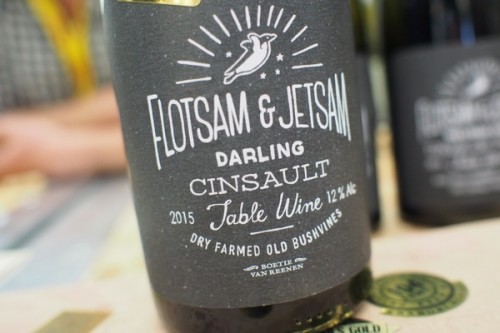
One thing that my tastings at Cape Wine has reinforced, is something that I have believed for a while. It’s that it is possible – even in quite warm climates – to make wines with moderate alcohol levels. I tried many lovely wines that had alcohol levels in the range of 12-13.5%, and one or two even lower.
Of course, alcohol isn’t everything, and it is possible to have balanced table wines at 14.5% alcohol. But this isn’t all that common. In the absence of other information about a wine, the alcohol level is a useful surrogate guide to balance and freshness.
As I tasted around the show, I found many beautiful red wines that were fully ripe, weren’t unpleasantly green, and had freshness with no added acidity. They were joyful, giving and drinkable: not austere and thin. I found the same for whites, but it was with the reds that this was most marked.
I even found reds at 12% alcohol and below that weren’t unripe. Freshness, balance, drinkability and detail – from warm climate wines with no acid additions. This is exciting, and there are now more of these wines than ever.
It’s as if a small movement has started where people have had the courage to pick earlier, taken the risk, and then have loved the results. They have no fear of competitions or critics who might punish them for their style choice (and this does happen). They have travelled and tasted, and they are no longer making wines they think the market demands, but have instead grown their own market for the sorts of wines they believe in.
In the recent past, winemakers worldwide have been obsessed with a concept known as physiological ripeness. This is about tasting grapes, looking for ripe flavours, brown seeds, pimpled skins – resulting in picking later and later. One South African winemaker I spoke to dubbed this ‘psychological ripeness’. The consequence of this approach was lots of tartaric acid and nutrient additions in the winery, trying to nurse the yeasts over the line as they poisoned themselves on the excessive alcohol they produced. Now the talk is of farming for acidity, looking to preserve natural acidity by picking at the right time rather than adding it later.
The other thing that seems to be happening – and, as with new ideas about ripeness, this isn’t restricted to South Africa among new world wine countries – is a growing appreciation of lighter red wines. Extraction is gentler, and whole bunches are frequently used. The new Cape star red grape is the once-lowly Cinsault, a grape that makes lighter, fresher reds in warm climates, either alone, or as a blending component.
Looking elsewhere in the New World, so many of the older Australian wines I have tried that have aged well showed lower alcohol levels than their current counterparts. The same is true of great old Californian wines. Global warming has been cited as a cause of this upward trend in harvest ripeness. But Cape Wine this year showed that even in warm climates – and the Swartland is properly warm – you can farm in such a way that picking earlier is possible, and the wines are just so much better and more interesting for it.
My view? Picking too late is one of the collective insanities of the world of wine over recent decades.
2 Comments on Changing views on ripeness in South Africa: a welcome development
Alongside all you said, there is a view that warm climates should use more appropriate varieties such as Cinsault and Grenache rather than trying to ape cool climate French wines such as Burgundies and Bordeauxs in unsuitable areas.
and you need to bear in mind that ABV levels are checked quite rigorously in the Cape—-certainly a lot more so than in France and many other countries.